Issued on July 17, 2024
Digging Deeper with Goddess Gardener Cynthia Bryan
A wealth of hot topics! By Cynthia Bryan
The hillside wildflowers were beautiful in June. Photo by Cynthia Bryan
May the sun bring you new energy during the day. May the moon gently invigorate you at night. Apache Blessings![]()
Baby, it's hot outside! Gardening in your favorite swimsuit means cuts and bruises, but it's a small price to pay for staying cool. With the recent heatwaves leaving most of us craving moon-like coolness, your water bill will no doubt be higher in the next cycle. I keep buckets in the shower and sink to collect all the excess drips. I save all the grey water for my plants. ![]()
Last month, we showed you our gorgeous hillside wildflower garden after some hand weeding, but after 10 days of temperatures over 100 degrees, that beauty has vanished, replaced by dried plants that will be cut down before this article goes live (see before and after photos).![]()
Not many flowers can survive this heat. Luckily, my trusty drought-tolerant natives, roses, clematis, agapanthus, pink bauervine, seafoam statice, lavender, potato vine, oleander, hollyhocks, and acanthus, are blooming and brightening the landscape. The sea of bumblebee-loving blue nigella flowers that covered the orchard last month have transformed into seed pods, which I am collecting to distribute to attendees of the Pear and Wine Festival on September 28th, when volunteers will visit the Be the Star You Are!r booth, where the public will be celebrating the 25th anniversary. (For more information, visit https://www.bethestaryouare.org/events-2)![]()
My family were “dry farmers,” not irrigating our orchards and vines, relying on winter rains, but when the heatwaves came, we had orders. My father bought a 1940s fire truck with a huge water tank and converted it into an irrigation truck. From the time I was eight years old, it was my job to drive the fire truck slowly between the narrow rows, from vine to vine, tree to tree, while my sister opened the taps. When the tank was empty, I drove to the well to refill it. In this way, we protected the harvest when temperatures soared into triple digits.![]()
You don't have a vintage fire engine with a water tank to water your garden. How can you protect your beloved garden during those very hot weeks? Planting your garden with heat- and drought-tolerant varieties increases the chances of enjoying a beautiful view all summer long. In addition to succulents, the blooming plants in my garden fit that bill. However, now is not the time to plant new plants unless you want a few colorful spots of annuals. Whatever plants you buy, be sure to observe them and water them diligently. Wait until the cooler days of fall to shop. In the meantime, keep an eye out for signs of heat stress, such as wilting, curled leaves, yellowing, or browning. Here are some measures you can take right now this summer to help keep your garden vibrant.![]()
Water, water, water: Check the soil moisture regularly. Stick a pencil or chopstick into the soil. If it's dry when you take it out, your plant needs water. The best times to water are early in the morning or late in the evening. Water generously and for longer than usual – this allows the moisture to soak in and not run off. I prefer to irrigate in the late evening so the plant has a few hours to hydrate. Soaker hoses and drip irrigation deliver water directly to the roots while minimizing evaporation.![]()
Misting: Just like people, plants benefit from a light misting in hot weather. This helps cool the plant tissue. For indoor plants, place a tray of water under the container to increase humidity.![]()
Shade, shade, shade: Use an umbrella, shade cloth, or gardening cloth to cover your most sensitive plants. Create a temporary tent with burlap or bed sheets. I prefer umbrellas over my very sensitive Gardenias, which can be quickly removed with temperature adjustments.![]()
Move your patio pots: Move your container gardens to a shady spot. Be aware of their water needs. Most containers dry out quickly, so water them thoroughly every day.![]()
Weeds, weeds, weeds: Weeds compete with plants for moisture and nutrients. Remove weeds if necessary.![]()
Mulch, mulch, mulch: Organic matter improves soil retention. Water regularly. Mulch helps the soil retain moisture for longer.![]()
Avoid fertilizing and pruning: Avoid heavy fertilization or pruning during heat waves as this will stress the plants. If you need to fertilize, choose an organic, balanced, slow-release fertilizer.![]()
Make sure to refill your fountains and water basins to provide water for wildlife. Birds, hummingbirds, bees, butterflies, bats and other pollinators are happy to visit. Foxes, skunks, raccoons, rabbits, reptiles and squirrels also enjoy the cold cocktails at my watering hole. It's easy to get dehydrated when working in the garden. Drink lots of water, wear sunglasses, sunscreen and a big hat. Whether you're wearing a swimsuit or overalls, jump in the pool or wet yourself with a hose if you feel too hot. Let the moonlight calm your mind and rejuvenate your body under the stars on cool nights. This summer is coming in hot. ![]()
– The Contra Costa Library is hosting many free in-person and online events. I will be attending Amazing Hummingbirds on July 22. The library hosts events on wildlife and other nature-related topics with Outdoor Explorers. Visit www.ccclib.org for upcoming classes and experiences for all ages.![]()
– The Native Plant Resource Teams are also offering a free Zoom class to help with native plant gardens. On July 23, you can learn how to create a bird-friendly garden. www.nativeplantresourceteams.net![]()
Happy gardening. Happy growing. Happy staying cool!
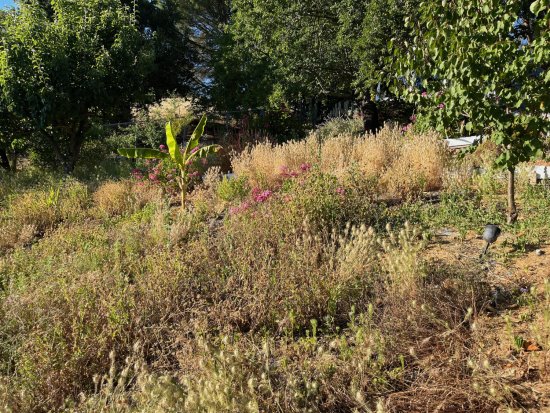
The wildflowers on the hillside have withered in the heat. Photo by Cynthia Bryan
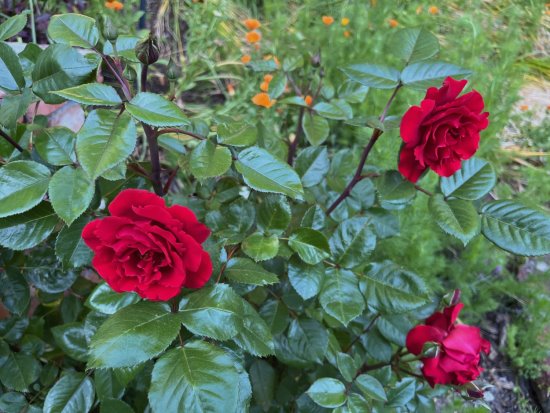
The red roses of Witula bloom well in summer. Photo by Cynthia Bryan
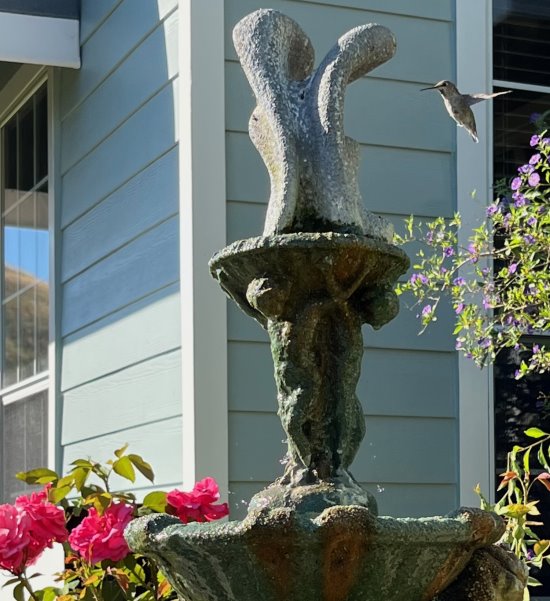
Anna's hummingbird stops at the fountain for a refreshment. Photo by Cynthia Bryan
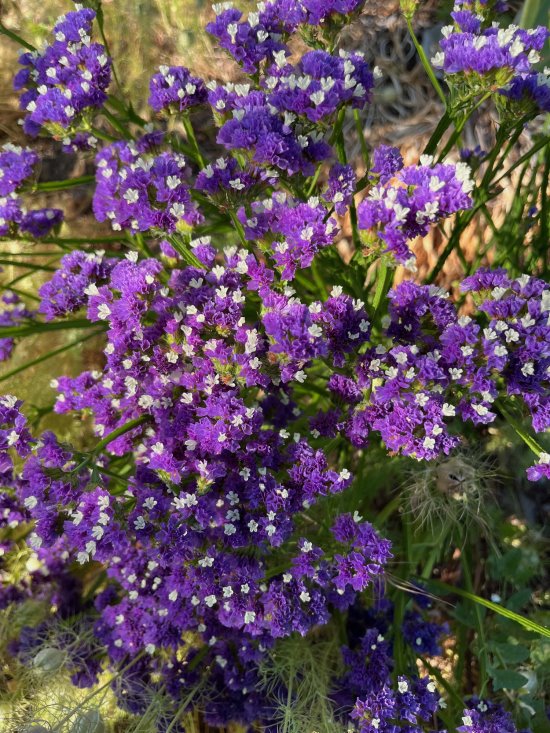
Seafoam statice is drought tolerant and retains its vibrant purple/blue hue. Photo: Cynthia Bryan

Bear's breech (aka acanthus) produces gorgeous cream-coloured spikes of flowers in summer and glossy green leaves in spring.
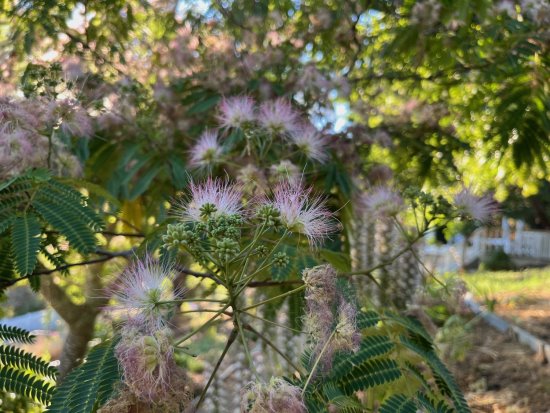
With its pink geranium flowers, the silk tree is graceful and delicate, yet hardy.
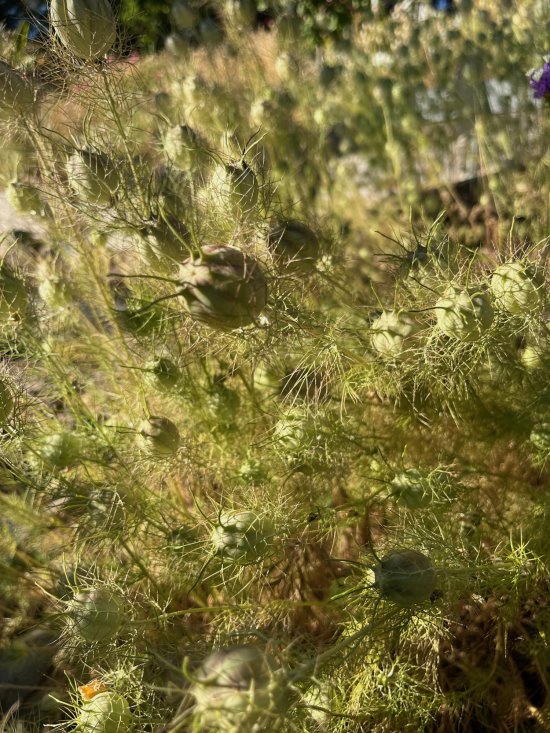
The seed pods of nigella flowers are used in dried arrangements.
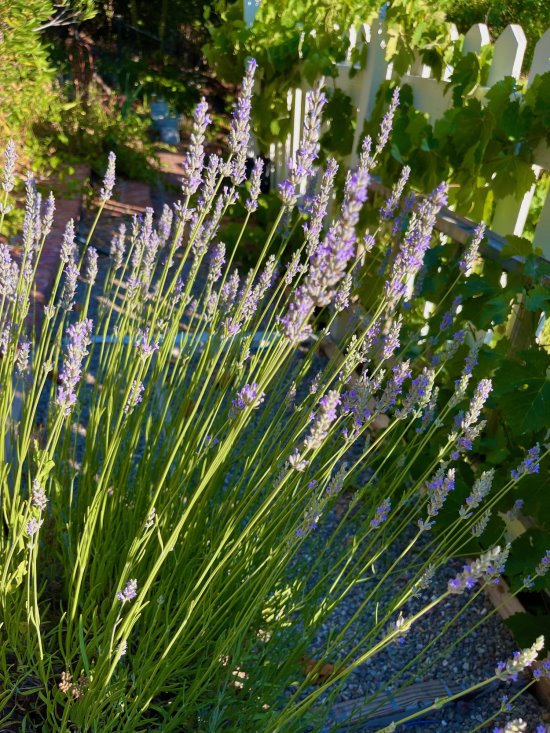
Portuguese lavender, Lavandula latifolia, thrives in the heat.

Cynthia Bryan cools off in the pool.
For more gardening advice for any season, check out “Growing with the Goddess Gardener” at https://www.CynthiaBrian.com/books. Raised on the vineyards of Napa County, Cynthia Bryan is a New York Times bestselling author, actor, radio personality, speaker, media and writing coach, and founder and executive director of Be the Star You Are!r 501 c3, which was just honored as the 2024 Nonprofit of the Year by the Moraga Chamber of Commerce. Listen to Cynthia's StarStyler radio broadcasts at www.StarStyleRadio.com. Her latest children's picture book, “Books in the Barnyard: Oh Deer!”, is in the series “Stella Bella's Barnyard Adventures” and is available at https://www.CynthiaBrian.com/online-store. Hire Cynthia for writing projects, garden consulting, and inspirational speaking engagements. Cynthia@GoddessGardener.com https://www.CynthiaBrian.com


